By: Debbie Carter, Public Information Officer, UAF Cooperative Extension Service/School of Natural Resources and Extension, University of Alaska Fairbanks and Glenn Juday, Professor of Forest Ecology, School of Natural Resources and Extension, University of Alaska, Fairbanks
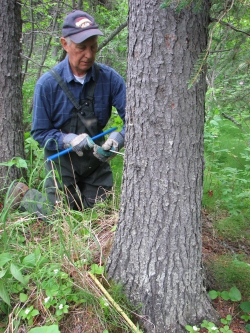
University of Alaska Fairbanks (UAF) scientist Glenn Juday noticed something curious while studying the growth of white spruce in Alaska. Spruce in the Interior grew least in warm summers and most in cool summers. Why did warmer summer temperatures affect tree growth? Was this happening everywhere spruce occurred? What was the best way to test the role of temperature in controlling growth?
Juday and French archaeologist Claire Alix originally collaborated to sample trees that grew along the interior Alaska floodplains of the Yukon, Tanana, and Kuskokwim Rivers as part of a study cross-dating driftwood, but Juday realized their research could also help analyze how climate controls the growth of trees.
Juday, a forest ecologist, reasoned that floodplains have approximately the same elevation, soil type, and origin. If they studied the same species, white spruce, on floodplains from eastern Alaska downstream to treeline, then the differences in growth patterns would be due mainly to temperature differences. "We just got more and more excited the more we thought about it," says Juday. "This was an opportunity to do a clear climate transect."
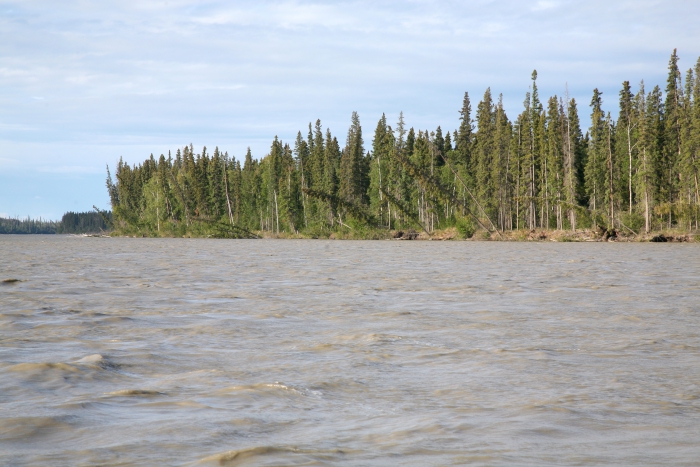
Juday and Alix, along with Tom Grant, a research professor at UAF, harvested tree cores and disks from 540 white spruce in 36 stands along the rivers. They conducted fieldwork for several years between 2002 and 2012, sampling from near Fort Yukon downriver to the western edge of the boreal forest near the Bering Sea. At each location, they chose the largest mature and old-growth trees.
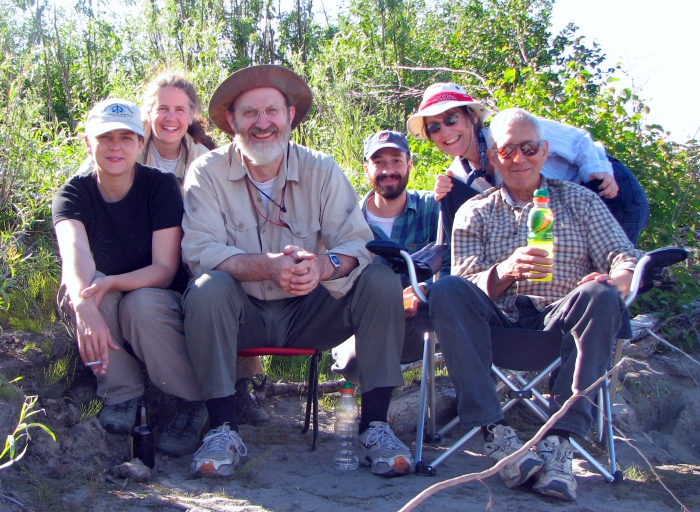
Altogether, they analyzed 167,000 tree ring width measurements. They then compared historical temperature and precipitation data from the Alaska communities of Fairbanks, McGrath, and Bethel to determine how temperatures matched growth rates at the different sites.
The results from their research were published this summer in the journal Forest Ecology and Management. The study found that Interior sub-Arctic climate has become too hot and dry to be the ideal environment for white spruce. Western Alaska has become the optimum climate region for the species. And even more importantly, the research confirmed what Juday had long suspected: a biome shift is already underway.
They identified trees that were "positive responders," or grew better in warmer conditions, and those that were "negative responders," or grew less under warmer conditions. The largest concentration of negative responders was in interior Alaska, and nearly all the positive responders were downriver in western Alaska. For the first time in the two centuries of recorded tree growth, the positive responders grew more than the negative responders. Pointing to a chart that shows positive and negative responders, Juday says, "That was the smoking gun evidence that climate change has arrived here."
Since the 1970s, Interior white spruce trees have experienced markedly lower growth than during the 19th and early 20th centuries. With modest additional warming, the study noted, "widespread tree death will be unavoidable on warmer lowland Interior sites, where persistence of white spruce is unlikely." The study concludes, "We find that July mean monthly temperature (MMT) and annual precipitation in Fairbanks are now outside the limits that previously characterized the North American distribution of white spruce and are near the reported physiological limits of the species. Our results of the spatial and temporal change of white spruce temperature sensitivity provide strong empirical evidence of a previously proposed early stage biome shift in boreal Alaska due to clear climatic causes."
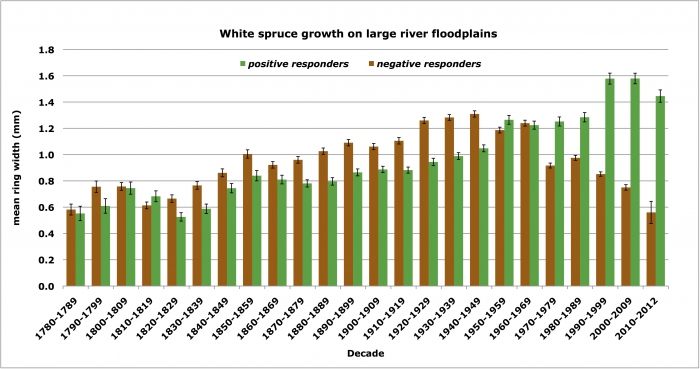
Juday points to a U.S. Geological Survey publication, "Atlas of Relations Between Climatic Parameters and Distributions of Important Trees and Shrubs in North America," which shows that white spruce does not occur naturally at July MMT above 15.7° C without substantially more than 270 mm precipitation. According to the study, the July MMT temperature increased from 15.7° C for the 1906-1951 period to 16.7° C for the 1952-2006 period. Precipitation decreased from 297 mm for the earlier period to 272 mm for the 1951-2006 period.
While sampling trees, Juday and the other researchers saw clear signs of temperature stress in Interior Alaska white spruce. In some places, they found stands of dead spruce trees. There were also beetle infestations and sparse needles on trees. According to Juday, the warmer temperatures are behind the trees' stress and making them more vulnerable to the insects. But even without the insects or wildfires, spruce is at the threshold for its viability on the warmest sites.
Juday says that some of the implications of their spruce research have to do with economics, since white spruce is currently the most commercially viable species of tree in the Interior. He also points out that the majority of state forests have been selected in the Interior. The Alaska Constitution requires that the state's replenishable resources must be "utilized, developed and maintained on the sustained yield principle."
However, the study notes, "Our results demonstrate that as long as recent high temperatures persist, achieving sustainable forest production will not be possible in the predominant negative response region of central and eastern Alaska when compared to the past two centuries."
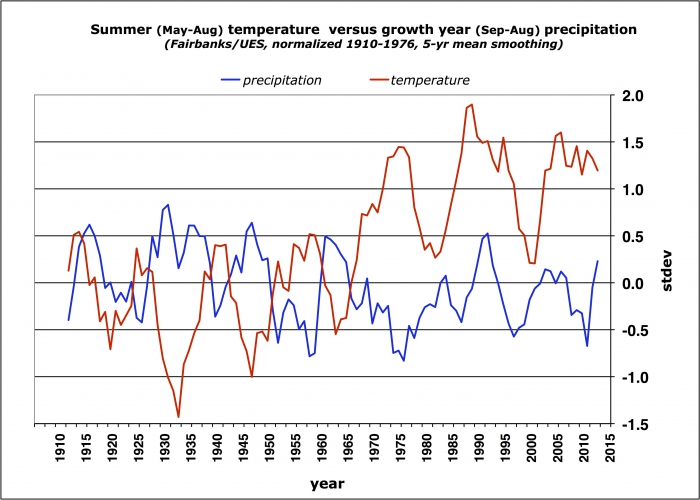
"State land classifications for forest management are concentrated in eastern and central Alaska, but now much of western Alaska has a strong potential for sustainable forest management for the first time, and should receive serious consideration for state forest establishment," the study suggested.
Juday and other researchers with the UAF School of Natural Resources and Extension are already taking the next step, measuring the regeneration of white spruce following wildfires. Juday says the ultimate sign that a species is in trouble is that it fails to regrow following a wildfire. So far, the data do not indicate that.
Juday's research has been supported through a variety of funding sources including the French government, McIntire-Stennis forest research funding through the U.S. Department of Agriculture, other USDA funding, the National Science Foundation, and the U.S. Geological Survey.
For further information, contact Glenn Juday at the School of Natural Resources and Extension, University of Alaska, Fairbanks (gpjuday [at] alaska.edu).
